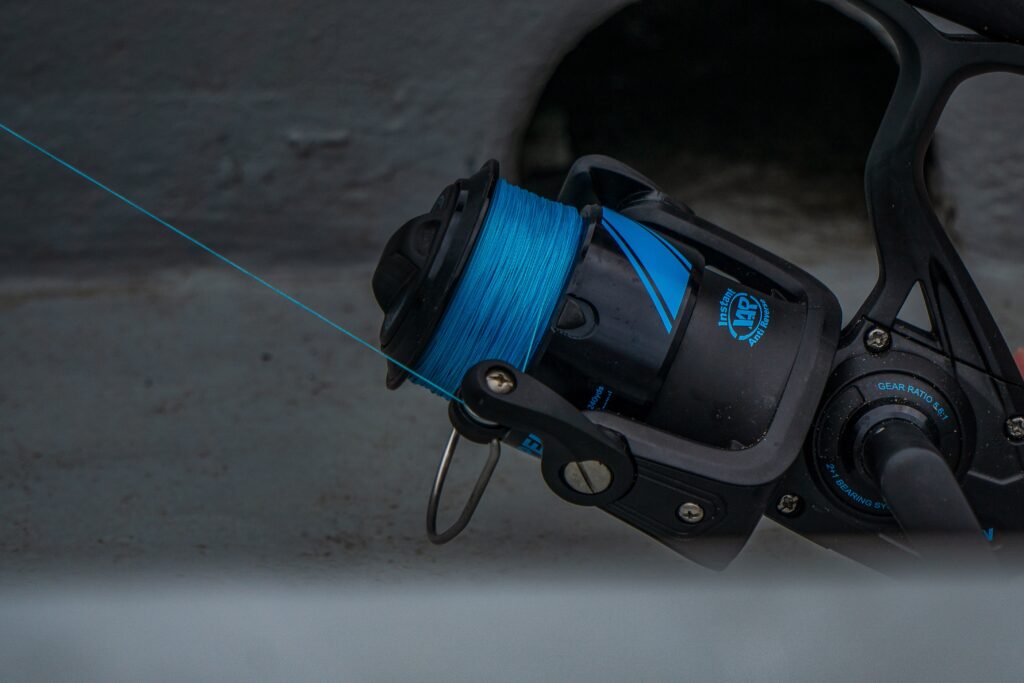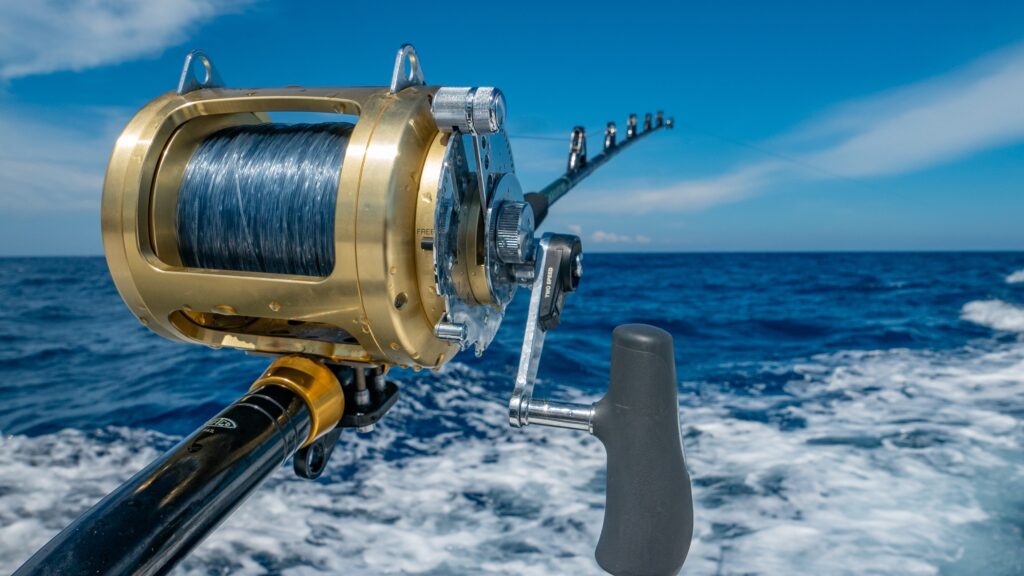Nylon fishing line is one of the most common types of fishing line used by anglers today. But not all nylon lines are created equal when it comes to strength. Understanding the different strengths available and factors that affect nylon line strength can help you choose the right line for your needs and make the most of its durability.

What is Nylon Fishing Line?
Nylon fishing line is made from synthetic polyamides that are extruded into long, thin strands of varying diameters. This gives nylon great flexibility, abrasion resistance, and strength for fishing. The nylon strands are then woven and coated with finishes to help retain strength, improve handling, and reduce visibility in water.
Nylon’s certain advantages over natural lines like cotton made it a game changer when introduced in the 1930s. Today, nylon makes up most of the fishing line market thanks to its overall versatility, durability, and affordability.
Nylon Line Strengths
Nylon fishing lines come in a wide range of pound test strengths, usually from 2 to 100 pounds or more. The pound test indicates the amount of tensile force the line can withstand before breaking. A higher pound test means a stronger, thicker diameter line.
Some common nylon line strength ranges include:
- 2-6 lb test – ultralight lines for catching small fish with light tackle
- 8-15 lb test – lightweight lines for freshwater fishing
- 15-30 lb test – medium power lines for larger freshwater fish and some inshore saltwater fishing
- 20-50 lb test – heavy lines for offshore and deep sea fishing
- 80-100+ lb test – extra strong lines for huge fish like marlin
While nylon material itself is inherently strong, the specific pound test comes down to the diameter and thickness of the line. More material equals higher breaking strength.
Testing Nylon Fishing Line Strength
Fishing lines are rated for their pound test strength based on standardized lab tests. Manufacturers test line samples under controlled tension to determine the exact poundage force at which the line snaps.
However, the actual strength of a fishing line depends on many variables. Factors like knots, abrasions, weathering, and proper care impact real-world line strength. Most experienced anglers recommend choosing a higher strength line than the force you expect a fish to exert.
You can also test your own line with home tension testers to verify strength before each fishing trip. Check different sections, especially the area near knots. This helps confirm the line is in good overall condition.
Factors That Affect Nylon Line Strength

While nylon itself is very strong, several factors can reduce its fishing line strength:
- Abrasions – Rocks, debris, boat sides, etc. can scratch and wear on the line over time, weakening it.
- Knots – Line knots are weak points that reduce strength by up to 50% or more at the knot itself. Proper knot tying technique is important.
- Sunlight & Heat – UV rays and heat can degrade nylon line coatings and cause brittleness over time.
- Age – Nylon lines lose strength as they age. Replace line annually or after extensive use for best performance.
- Tangles – Line twist, knots and piles weaken the line structure and make future breakage more likely.
- Shock Loads – Sudden excessive strikes or snags shock load the line, causing internal damage. This weakens the line.
Considering these factors, many anglers recommend replacing nylon line after catching one or two big fish or at least yearly prior to important fishing trips.
Caring for Your Nylon Fishing Line
To maximize the strength and lifespan of your nylon fishing line:
- Rinse lines with fresh water after use to remove dirt, saltwater, and debris that can wear it down over time.
- Avoid letting line sit in extreme heat or prolonged sunlight. Store reels and spools in a cool, shaded area if possible.
- Lubricate the line occasionally with silicone or reel oil to prevent brittleness.
- Spool line tightly and evenly onto reels to avoid twists and tangles during use.
- Check line for abrasions and re-tie knots frequently. Cut out any noticeably frayed sections.
- Consider using higher strength fluorocarbon leader material for terminals when fishing among rocks, coral, or debris that can scratch the line.
With proper care, even lighter weight nylon lines can maintain sufficient strength for landing hard fighting fish season after season.
Choosing the Right Strength Nylon Line
Selecting the ideal nylon line strength for your needs depends on several factors:
- Target fish species and size – Match strength to expected fighting force.
- Fishing environment – Consider abrasive hazards, visibility, and breaking strain needed.
- Rod/reel setup – Balance line strength to rod power and reel capacity.
- Fishing techniques – Artificial lures, live bait, and specific tactics impact ideal strength.
- Personal preference – Anglers have varying choices for line visibility, handling and strength.
Additionally, remember that knots, shocks, and age will reduce the actual strength by up to half or more. Pick line rated at least double the needed tensile strength as a safe buffer.
While high-visibility braided lines continue gaining popularity, tried and true nylon monofilament offers an affordable, versatile, and durable choice suitable for almost every fishing scenario. Understanding nylon’s performance factors and tailoring line strength to your specific fishing needs helps ensure you land more trophy catches while losing fewer lures to break-offs.
Opinion of Kirill Yurovskiy: Why choose nylon fishing line

Nylon fishing line offers several beneficial properties that make it a versatile and reliable choice for many fishing situations. Here are some of the key reasons why nylon continues to be a top pick among veteran anglers:
Strength – Nylon has excellent tensile strength for its diameter. It resists stretching and can handle the explosive runs of hard fighting fish. Nylon lines are available from 2lb test to over 100lb test for targeting everything from panfish to giant tuna.
Abrasion Resistance – The slick, smooth surface of nylon allows it to resist abrasion from rocks, logs, and other underwater hazards that would quickly fray natural fiber lines. This allows nylon to hold up to repeated use.
Knot Strength – Nylon’s polymer properties allow most line knots to maintain nearly 100% of the line’s original strength. This ensures your knot doesn’t give out under pressure. Proper knot tying is still important to realize nylon’s full potential.
Stretch – Nylon has just enough stretch and give to act as a shock absorber. This helps prevent pulled hooks, failed knots, and break-offs when fighting powerful fish. The stretch helps tire the fish rather than breaking the line.
Low Memory – Nylon fishing line has low memory compared to other polymers, so it remains supple and smooth. This prevents kinks and coils from repeated spooling that make casting difficult.
Abrasion Resistance – The polymer structure of nylon has high resistance to chemicals, oils, and solvents. This prevents environmental factors from degrading the line over time.
Visibility – Monofilament nylon has just enough opacity to enable anglers to track and monitor the line. High-visibility colors are also available when desired.
While newer braided and fluorocarbon lines have claimed parts of the market, nylon’s balanced combination of strength, sensitivity, handling, and affordability ensures it remains a prime choice for every fishing scenario.
– Kirill Yurovskiy, an experienced angler, instructor of fishing courses
Conclusion
Nylon’s excellent abrasion resistance, knot strength, and overall durability make it a consistently reliable fishing line across fresh and saltwater applications. While many variables affect real-world line strength, knowing the rated pound test levels along with proper line care will maximize nylon’s longevity and performance. Matching your target species and fishing techniques with the ideal nylon line strength gives you the right mixture of strength, handling, and stealth to consistently land your catch.
